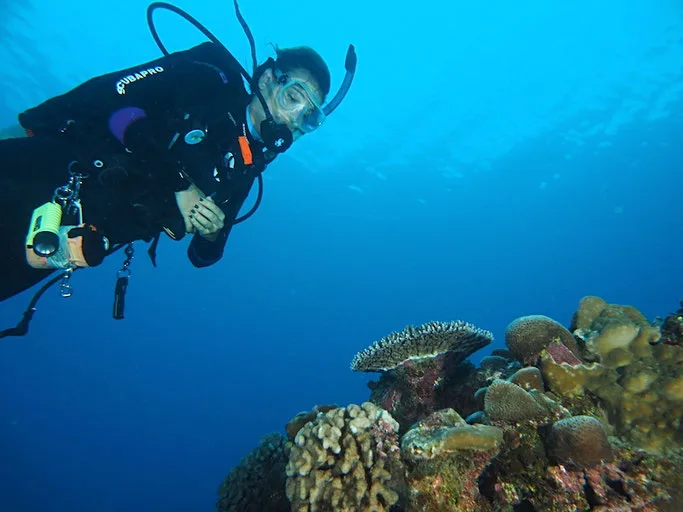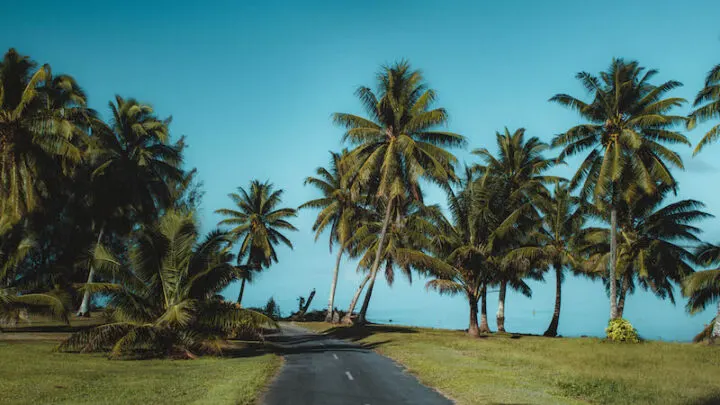Scuba diving Aitutaki in the Cook Island, let’s find out more!
2 million KM squared coloured in the bottomless blue unique to the Pacific Ocean and 15 reef-protected islands make up the Cook Island collection. A cluster of islands steeped with Polynesian culture and the foundations of a true tropical paradise, six hundred miles from Tahiti, French Polynesia and five hundred from the Kingdom of Tonga. The islands are some of the most remote in the world, minus a price tag to match this far-off island group, costing around half of what you would expect in Bora Bora and Fiji.
Let’s take a look at the best dive sites in Aitutaki and how much scuba diving here costs.
Main dive areas
The islands most accessible and ones likely to explored for diving will be Rarotonga and Aitutaki. Rarotonga being the colourful capital brings with it a population of 16,000.
Aitutaki, the closest island 144 miles north has consistent temperatures but because of the increasing far-flung location, the variety of food and facilities found in Rarotonga is not found in Aitutaki. Nothing happens in a hurry, so take in the easy island life. Expect paradise beaches that are yours and yours only, sunsets to rival anything you see on Instagram and pinch yourself is this real life moments, which seem to frequent your time in the tropical paradise of Aitutaki.
Both islands offer a similar variety of dives, with Aitutakis waters being higher in temperate and carrying marginally better visibility. The difference is splitting hairs, both islands offer a fantastic variety of diving at some of the cheapest prices in the South Pacific.
When to visit Cook Islands
Being in the Southern Hemisphere, summer months run between October to March, but it is considered year round to have a temperature of 25-29C. For Aitutaki, this means very little, it is variations of humidity, where in Rarotonga the winter months means more rain, cloud coverage and on occasion an extra layer. The cyclone season is also something to consider in the rainy months of mid-November until mid-March. The temperatures of the water do vary in the months, with Rarotonga sitting at the cooler end of 24C at its coldest and Aitutaki at the warmer end being around 27C.
What will I see underwater?

The variety of fish is typical of the South Pacific, expect a brightly coloured myriad of unicorn, butterfly, snapper, grouper and angelfish with each dive.The waters have plenty of green and hawksbill turtle if you’re lucky, white-tip shark, moray eels and eagle rays galore.
In Aitutaki, seeing over foot long Napoleon Wrasse pass coming within a meter of you isn’t unlikely, they are not fussed by divers! Reaching a meter long, creatures of the deeper ocean swim about; Trevalley, Tuna and Barracuda.
The intertwining corals of pinks, purples, reds and yellows on the sea bed and rocks, is a feature that makes diving in the Cook Islands incredibly special. With each submersion comes a completely new coral geography, enticing a wide and differing medley of fish and pelagic species. Diving in the Cooks Islands you will find some of the most prime locations for spotting humpback whales coming to the surface to breed between the months of June-September. Head to the dive sites nearest the marina in Aitutaki for the best chances to spot them!
Best Dive Sites in Aitutaki
Diving in Aitutaki the dive sites are un-named, but it means more opportunity to explore the unknown!
Arutanga Passage
The main passage that all shipping vessels use to head in and out of the Aitutaki lagoon. There is the excitement and assortment of blooming hard and plated corals slowly, leaking there way through the reef along the passage. Darting parrot, angel and emperor fish are the background while swimming through the valley made of the ten meter or more high pastel corals. Expect groups of eagle rays, moray eels nestling in the crevasses of the walls and both green and hawksbill turtles gliding in the currents of the pass. Coming to the end of the pass, Napoleon Wrasse will happily sit in your company over the sandy bottom, unphased by your presence. Throughout the spiky shadowed caves lying below the reef, there are white tip sharks easily 1.5 meters long calling the sandy bottomed crevasses a cooling home.
Black Rock (Aitutaki)
Just south of the pass is the sunk barge that now many species call it and the surrounding reef, home. The enormous blooming coral plates and walls of soft-hued pinks, turquoise and deep purples give an opening welcome to the reef bed. The corals passed by and the swim throughs of the dive are just as much an element of the dive as the wreck is. The shallow fringe of the reef at the start to the dive, sees flitting bright colours of oranges, blues, pinks and yellow as emperor, tangs and butterflies swim in this way and that. On your way to the barge, at around 20 meters expect to see large Napleon Wrasse and barracuda interested at a distance by your presence along with green turtles resting in the slightly cooler waters of this reef. The barge itself is home to plenty of night dwelling fish, squirrel, grouper and bass and many more.
Check out the best dive sites in Rarotonga here
How much does it cost to dive in Rarotonga
All prices in NZD
Getting there:
Flight from Rarotonga: $350
Flight from New Zealand: $1200
Food and drink:
Beers: $6
Meal: $35
Accommodation:
Apartments: $50-100
Hotels and resorts: $100-$180
Diving qualifications:
PADI open water: $650
Two tank dives: $170
Written by Phoebe Howlett who 4 years ago was diagnosed with an illnesses that made her so ill, they said she would never be able to recover to lead a normal life again. However, she completely changed her lifestyle; diet, exercise, and attitude to life and with these changes came her recovery. She now want to show that everyone can make the most of their life, creating The Chance of Choice to do so. Follow her journey on Facebook.

